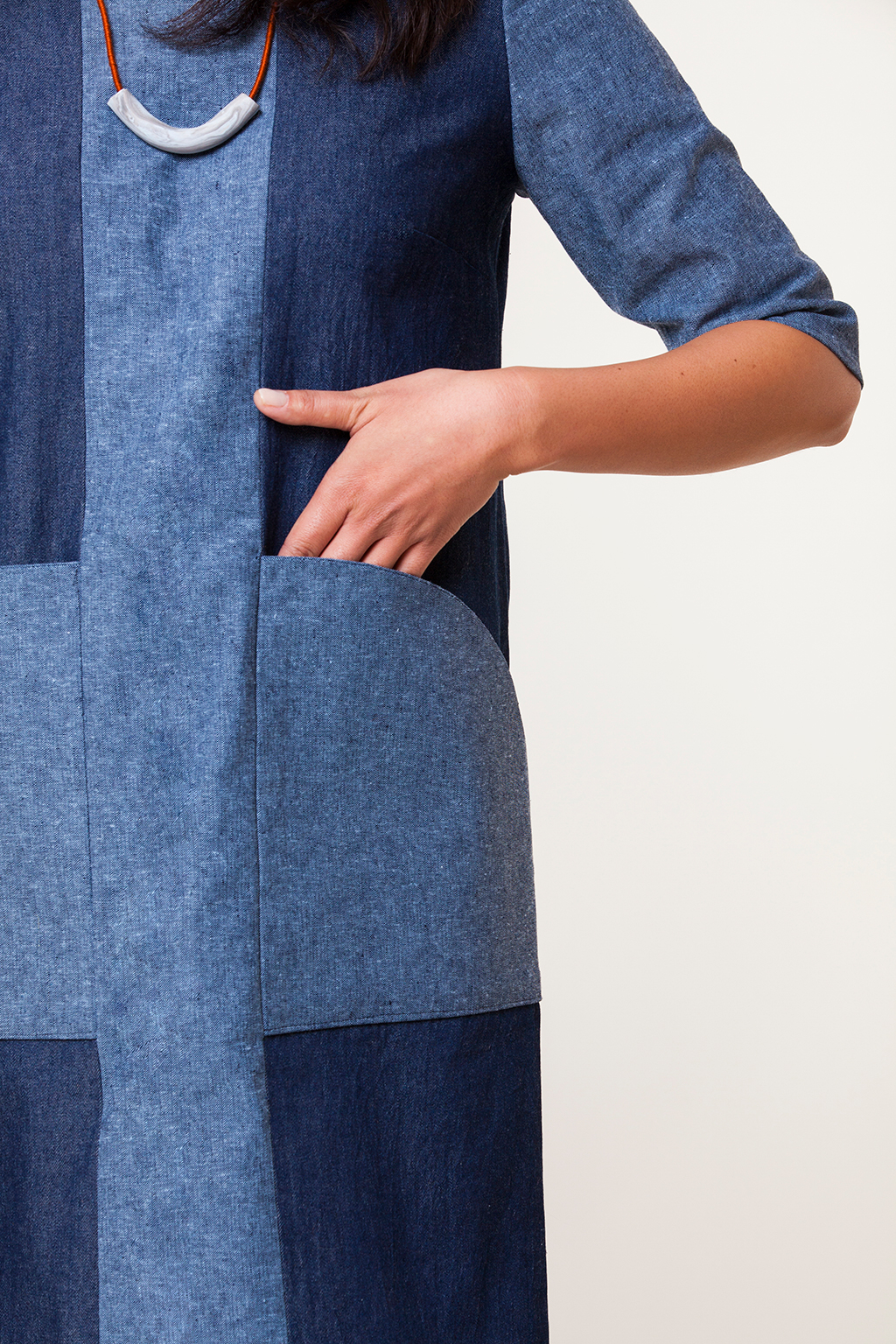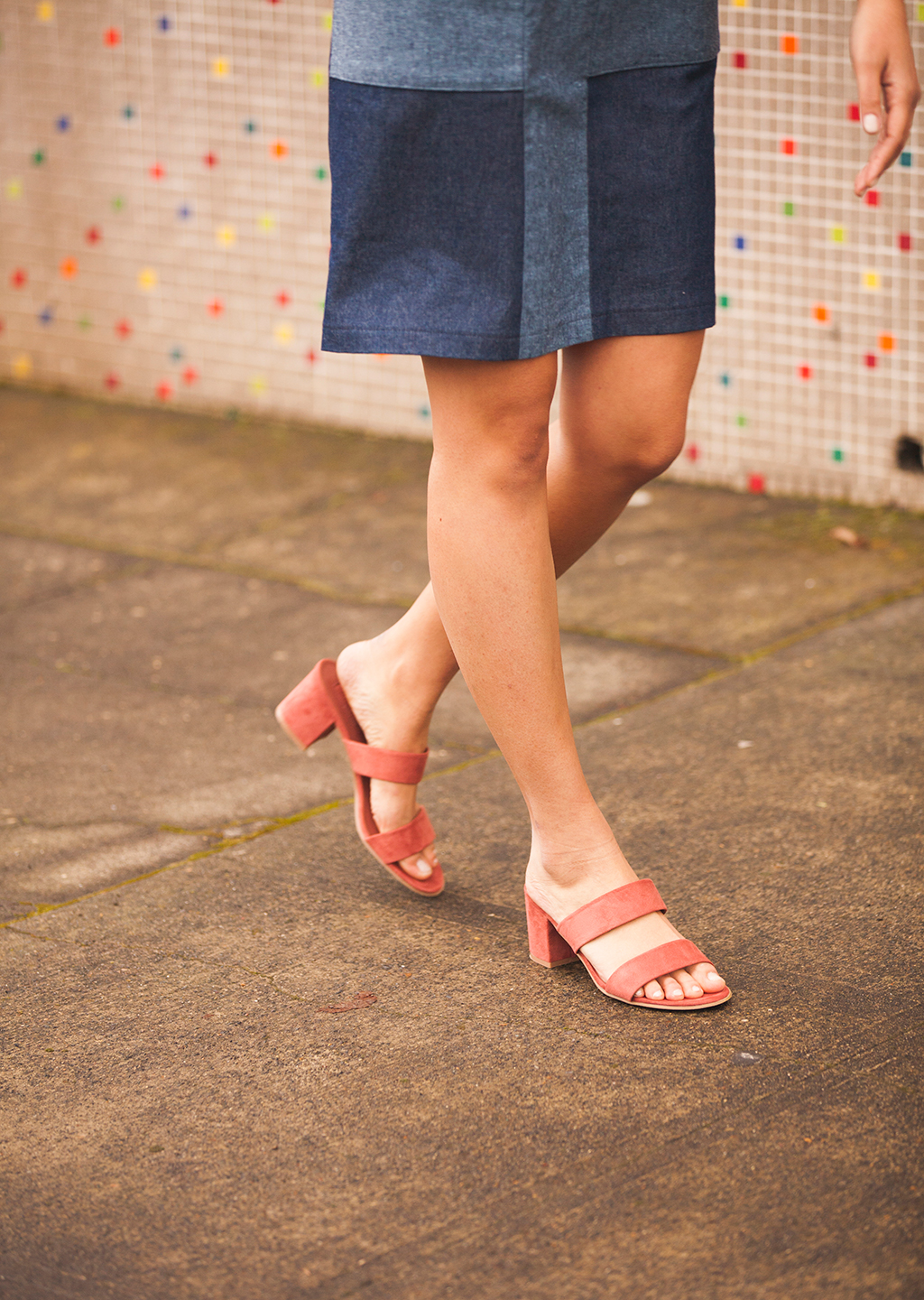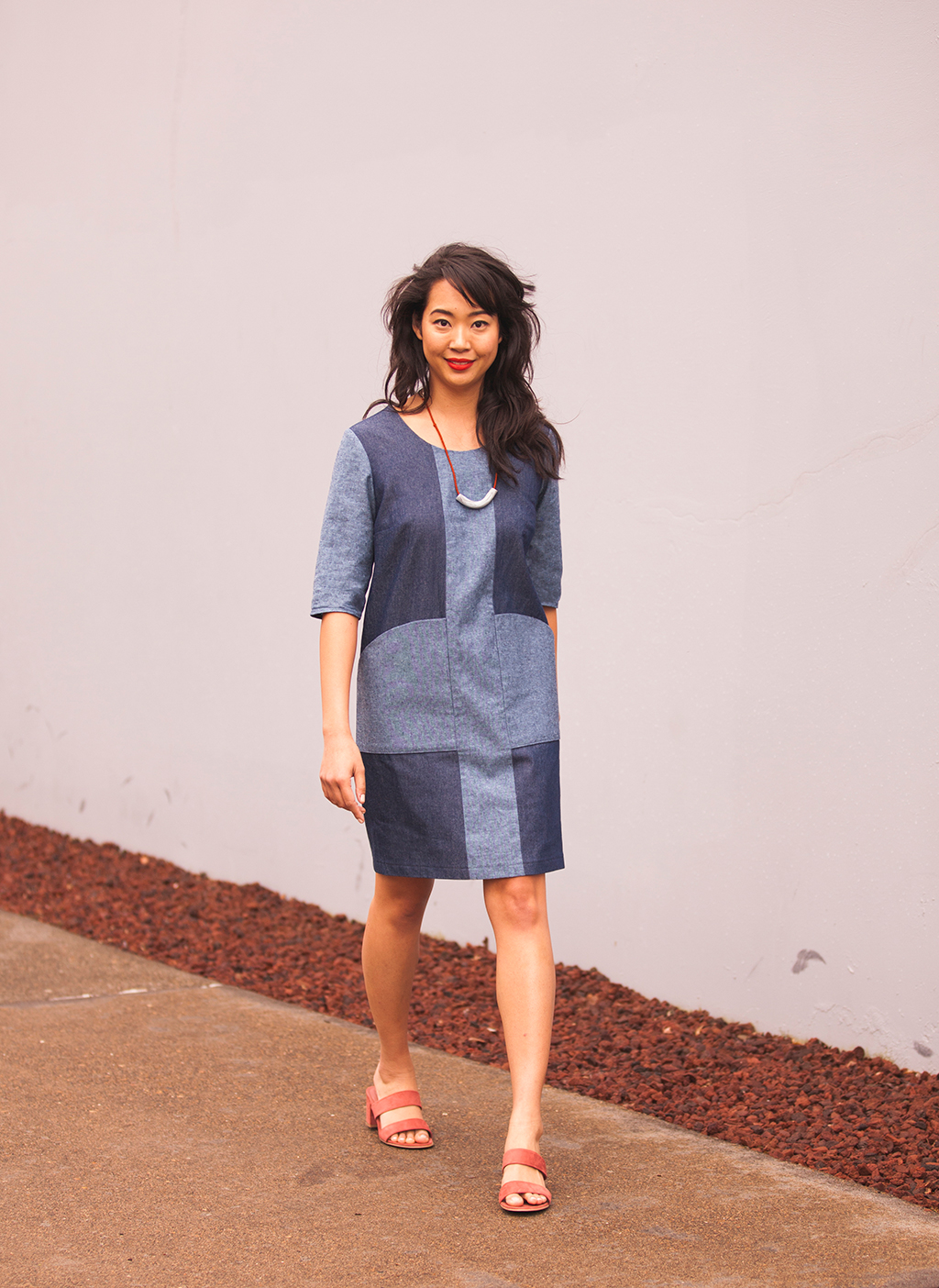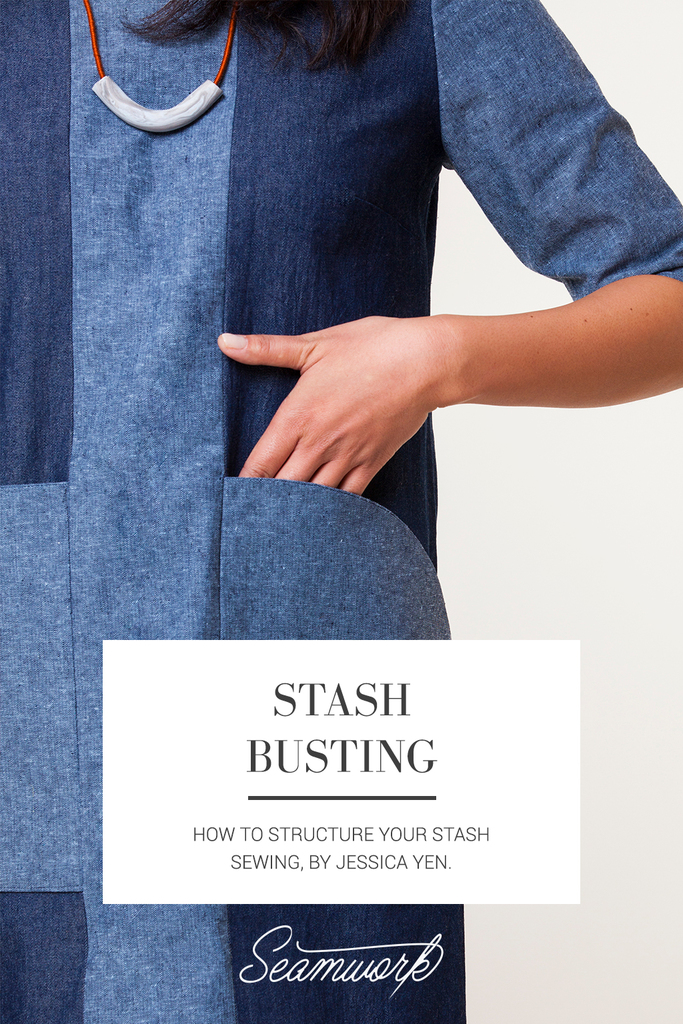
Stash busting can be an overwhelming prospect. There’s the sheer number of fabrics to choose from. You may have a sizeable pattern queue. If you’re like me, you might have purchased fabric with one purpose in mind, only to find that your wardrobe has since morphed in style or function. Nobody likes to sew for the sake of using up fabric, yet the psychic weight of unused fabric can deplete sewing mojo.
Rather than feeling overwhelmed by the possibilities, you may find it helpful to return to a central principle of making: creativity thrives within a structure. Perhaps, then, we can reframe this question of stash management such that we ask: How might we structure our stash-busting efforts so that stash sewing feels both fun and useful?

Creativity and Structure
Break the rules
Structure gives us an explicit set of rules that we can happily set about breaking. The rules are our container, and if we focus on breaking just one or two at a time, then we can look for iterations that work precisely because they aren’t supposed to. Sewing clothing from quilting cotton, adult outfits using juvenile prints, wearing white after Labor Day, donning a dress over pants—these are all examples of style “rules” that break specific conventions, but do so in a limited way. After all, one would not typically wear a quilting cotton dress covered in cute animals over white pants after Labor Day… although if that’s your jam, don’t let me stop you!
Targeted rule-breaking means we can focus on adapting the remaining parameters so that our finished product works. The question thus becomes, “How might I create a quilting cotton dress that I’d reach for day after day?” When you break specific rules, you open avenues for new possibilities.
Push the boundaries
A variation on rule-breaking is to push the boundaries associated with a single rule. You might look for the edge of acceptability, for example. How much can I push the collar on a blouse—how big, how embellished, how colorful, how color-blocked, how crazy of a print can I use, how many collars can I layer?
Or maybe you stick to one pattern and challenge yourself to come up with as many stash-sewn variations as possible—Laurel would be a great pattern for this. Indulge yourself in a thought experiment. What if you tried to come up with 50 ideas? 100? Many would be garbage, sure. But creative professionals know that sometimes the best idea is idea #49 and that the point of ideas #1-#48 was to get to that single gem.
Push hard on one element
Sometimes, as you examine the structural components that constrain your project, you’ll find yourself honing in on one element to experiment with. This intense focus can yield a surprising amount of mileage. The fiction writer George Saunders, for example, tends to experiment with just one element of storytelling, namely voice. With each short story that he writes, he keeps stretching and morphing and challenging our notions of how voice can interact with the story. There are so many other fictional tools that he could work with: character, setting, plot, pacing, dialogue, perspective, genre, time, structure, etc. But by coming back to voice, over and over again, he’s come to be known as one of America’s most innovative contemporary short-fiction writers.
Closer to home, you might think about one clothing element you want to focus on, and then see how that intense focus seeds new ideas about sewing through your stash. For example, say you’ve realized that you prefer clothing that has pockets. If your next five garments all featured pockets, what would you make? What if three had in-seam pockets and the remaining two had statement pockets, and all of them had to come, at least partially, from the stash? There is endless room for variation.
Sometimes, the hardest part of stash sewing is getting excited enough to start, so anything you can do to kick-start the process is helpful.
Enhance in-the-moment creativity
Flow and rituals are two ways we can structure our sewing process to enhance creativity. With flow, it becomes easier to enter a state of effortless work. Entering a state of flow can also make it easier to see your existing fabric and sewing patterns in new ways, as you will be in a heightened state of creative possibility.
Our sewing rituals, when performed consistently, can serve as triggers that tell our creative mind that we are about to engage in a certain type of activity. Over time, we become used to thinking imaginatively whenever we are engaged in these activities, and so it is easier to enter a creative state. If stash sewing is a priority this year, it could be worth investing in a sewing planner, croquis, or a swatch journal. Keeping all your planning notes in one place can form the basis of a ritual. Even the practice of flipping through a swatch journal or sewing planner at the start of a project can offer similar benefits.

Finding Your Structure
Although it might be tempting to dive straight in with the first one or two rules that come to mind, we need to carefully consider what types of structure we thrive best in. This part of the process is purely personal, as a structure that invigorates one sewist will kill another sewist’s mojo. Since most of us have an internal read on the types of things that work for us and the types of things that don’t, you might come up with a handful of ideas for yourself, and then use your personal compass to whittle down your list.
If you need help coming up with ideas, you might consider the following.
Excavate your preferences
If you were to adopt the “one in, one out” rule for your wardrobe, what are the first pieces you’d remove and why? What pieces would you hang onto, and why? This assessment might offer clues as to what to stay away from (the starting point for a rule) and what to make more of (the starting point for another rule).
Escape clauses
The instant I make an ironclad rule for myself, I start looking for all kinds of excuses to break that rule. Instead, I prefer a modified version of the 80/20 rule: 80% of the time I will try to stick to my chosen structure, and 20% of the time I give myself free reign. After all, life requires contingency plans, and sewing is no different.
You might decide to sew 80% stash and 20% new fabric, or this idea is easily applied elsewhere: 80% frosting and 20% cake, 80% work clothing and 20% weekend wear, 80% prints and 20% solids, etc.
Follow someone else’s rulebook
If you prefer a little more guidance, you might start with a guide to creating your ideal wardrobe, and lift the pieces that work best for stash management. Wardrobe Architect, for example, walks you through the process of identifying which colors, silhouettes, and fabrics to prioritize working with in the coming season. It could be a great way to identify a couple of lengths of stash fabric you want to start working with immediately!
Although it may sound counterintuitive at first, there are an endless number of ways that a little structure can improve creativity. Best of all, this approach can be applied to any creative challenge. Sewing from the stash, especially if you are feeling overwhelmed by where to start, can be the perfect opportunity to apply this technique to your sewing practice. May 2017 be your best stash-busting year yet!


